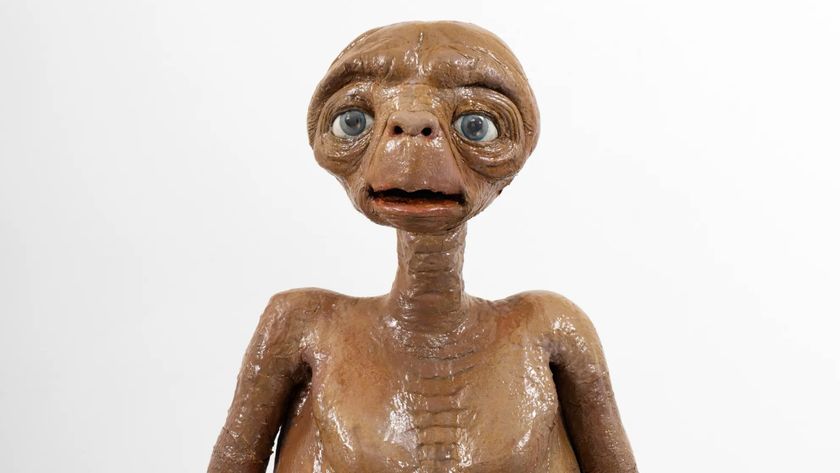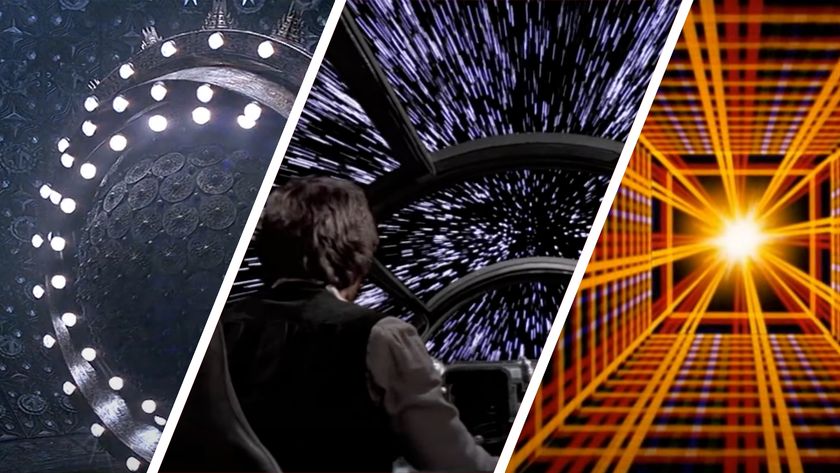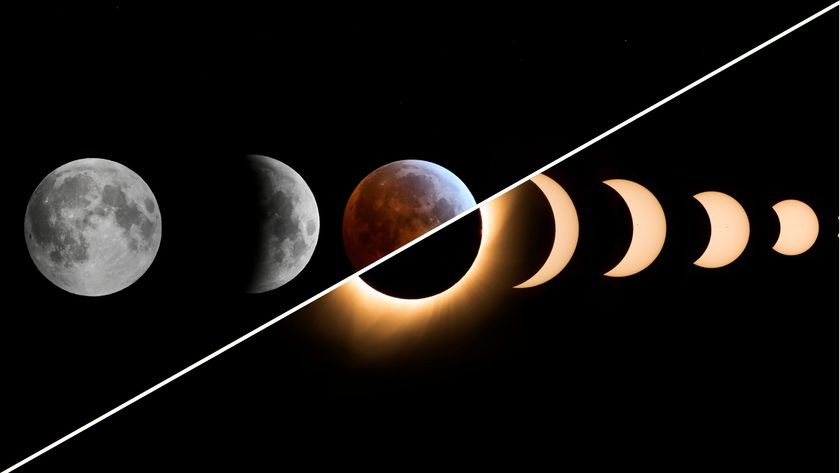Planetary defense: Protecting Earth from space-based threats
Every day, Earth is bombarded with hundreds of tons of small objects.
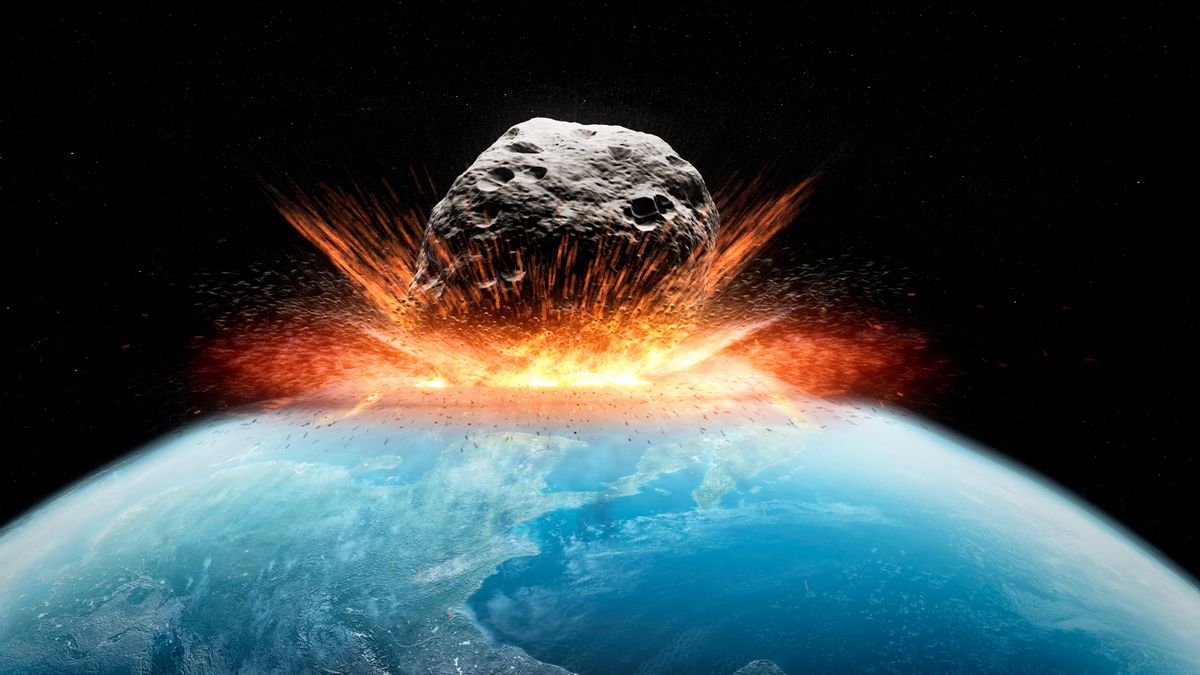
Planetary defense is the effort to monitor and protect Earth from asteroids, comets and other objects in space.
Earth's gravity attracts more than a hundred tons (more than 90 metric tons) of small objects and dust from space daily, according to NASA. Most of this material burns up in the atmosphere without any effect on the planet; larger chunks may produce a bright streak of light that's visible in the night sky or a small meteorite for a rock hunter to find.
Earth's atmosphere, which is thick and protective compared with the more exposed surfaces of Mercury or the moon, mitigates the dangers of these small collisions.
Related: Chelyabinsk meteor explosion over Russia 10 years ago was a planetary defense wakeup call
But life on Earth has been drastically altered by asteroid impacts before; the Chicxulub crater, for example, is evidence of the planet-shaking strike that led to the extinction of the non-avian dinosaurs. Planetary defense systems work to identify potentially harmful objects (PHOs, in NASA's Planetary Defense Coordination Office terminology) in proximity to Earth. While these systems have not yet identified or dealt with any major threats, NASA, the European Space Agency (ESA) and other organizations are preparing to redirect or destroy dangerous objects one day.
Today, telescopes around the globe scan the sky regularly to locate any bodies that are at risk of crashing into our planet. Catalogs like this one from NASA's Center for Near Earth Object Studies (CNEOS) list threat levels and other data about these objects so that there will be a warning before any known objects collide with the planet.
Meanwhile, researchers are developing ways to physically change the course of PHOs and defend the planet from catastrophic collisions.
Planetary defense FAQs answered by an expert
We asked Davide Farnocchia a navigation engineer at NASA's Jet Propulsion Laboratory (JPL) and scientist for the Center for Near-Earth Object Studies, a few commonly asked questions about planetary defense.
Davide Farnocchia is a navigation engineer at NASA's Jet Propulsion Laboratory (JPL) and scientist for the Center for Near-Earth Object Studies, which is managed by JPL for NASA's Planetary Defense Coordination Office.
How do we know if anything e.g. asteroids, or comets, is on a collision course with Earth?
By discovering as many asteroids and comets as possible, as early as possible, and assessing where they are going. Fortunately, the motion of asteroids and comets is quite predictable and we should be able to determine if any of them are on a collision course with Earth many years in advance. But we have to discover these objects first, and then track them. This is why NASA has funded large telescopes to scan the sky every night and discover as many asteroids and comets as possible.
Once an object is discovered, we use the tracking measurements to estimate its orbit around the sun. For most objects, the orbit comes nowhere close to that of the Earth and we can quickly rule out any collision. However, some of these objects, called "near-Earth objects" (NEOs), follow orbits that could potentially bring them into the Earth's region of the solar system, and these ones need to be analyzed in more detail. Therefore, we closely track near-Earth objects and precisely map their future trajectory to assess whether they can in fact come very close to Earth, and maybe even impact. As we get more data, we refine the trajectory calculations until we can conclusively rule out (or in) an impact with Earth.
What size asteroid would destroy Earth?
No near-Earth object is large enough to potentially "destroy" Earth. There are no asteroids and comets big enough to do that that come anywhere near our planet. But you might ask "What size asteroid would cause a global catastrophe?"
Asteroids of 1 kilometer [0.62 miles] in size or larger have the potential of causing a global disaster if they were to hit the Earth. For this reason, in 1998 the US Congress tasked NASA with discovering and tracking more than 90% of near-Earth objects larger than 1 km. This initial mandate was met over 10 years ago, and NASA has concluded that none of these discovered large objects poses any impact threat over the next century.
Could a comet ever hit Earth?
While no known comet represents an impact threat for the foreseeable future, comet impacts are possible, albeit extremely rare. There are orders of magnitude fewer comets than asteroids and their orbits bring them close to Earth much less frequently. Therefore, comets represent approximately 1% of the total impact risk.
What factors affect whether an object is considered a threat to Earth?
The two main factors are the object's orbit and its size. If the trajectory of the object has no chance of intersecting Earth, then it's not a threat. If the object's path possibly does impact, we need to consider its size. Small impactors of a few meters in size or less will disintegrate in the atmosphere and cause no damage to the ground. Objects of tens of meters in size could cause localized damage, 100 meters or more regional scale damage, and 1 km or more global damage. The good news is that the expected frequency of impacts on Earth falls off dramatically for larger and larger objects. For example, objects larger than 1 km impact Earth no more frequently than every several hundred thousand years, on average. Impact events like the Chelyabinsk meteor of 2013, which was only about 20 m in size, happen on timescales of once every several decades, on average.
What is Earth's current planetary defense system?
Most of the planet's current defense system is focused not on active defense but on the identification of potential hazards. Several organizations, including NASA and its CNEOS, participate in tracking and categorizing near-Earth objects (NEOs). In 2022, NASA's NASA's Double Asteroid Redirection Test (DART) mission became the first to test a practical method of NEO deflection, demonstrating the agency's ability to target and send a spacecraft to collide with an object in space, thereby altering its course.
Related: If an asteroid really threatened the Earth, what would a planetary defense mission look like?
International organizations that work on planetary defense include the International Asteroid Warning Network and the United Nations Office for Outer Space Affairs. Both organizations participate in global planning conferences and exercises for planetary defense. The International Astronomical Union's Minor Planet Center maintains lists of NEOs and "close approaches."
In 2016, NASA created its own Planetary Defense Coordination Office to manage a network of partnerships and projects within the United States. NASA works with several land-based sky surveys to maintain a list of potentially hazardous objects. These initiatives include the Catalina Sky Survey (University of Arizona), Pan-STARRS (University of Hawaii), Lincoln Near-Earth Asteroid Research (Massachusetts Institute of Technology) and Spacewatch (University of Arizona).
Several telescopes also observe asteroids from space. One space telescope that's regularly used for NEO searches is NEOWISE. Initially called the Wide-field Infrared Survey Explorer (WISE), the telescope launched in 2009 and was revived from hibernation in 2013 to surprising and long-lasting success. A 2022 time-lapse video of 12 years of NEOWISE observations revealed hundreds of millions of objects. A new telescope called NEO Surveyor is slated to launch in 2028, according to the mission website.
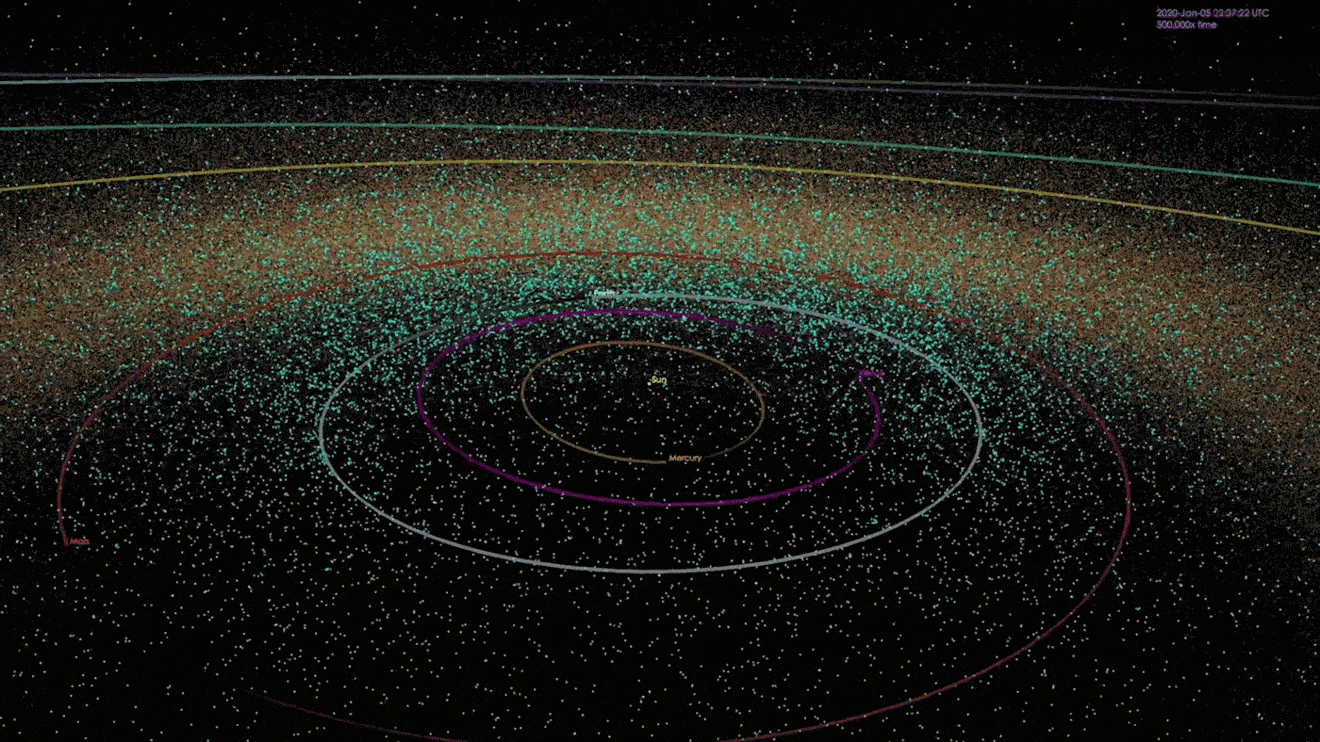
NASA has been tracking NEOs since the 1970s, according to a 2014 NASA statement. In 2010, NASA reported to Congress that it had located at least 90% of potentially hazardous NEOs larger than 0.62 miles (1 kilometer) in diameter. But the agency was also tasked with finding at least 90% of potentially hazardous NEOs that are 140 meters (460 feet) in diameter or larger. As of 2021, NASA estimated that fewer than half of these objects had been located and categorized, according to a statement from the University of Arizona, and the developers of NEO Surveyor hope the telescope will fill in the blanks within a decade of its launch.
What does Earth need to be defended from?
Potentially hazardous near-Earth objects are asteroids and other space debris within about 30 million miles (48 million km) of Earth that could be large enough to cause mass casualties and damage to the planet — about 460 feet across, according to NASA's Jet Propulsion Laboratory. Depending on their size, speed, angle and impact region, these objects could threaten billions of lives on impact and in the ensuing tsunamis, earthquakes and fires.
But smaller bodies can pose a threat, too. For example, in 2013, a roughly 56-foot-wide (17 m) asteroid broke up over Chelyabinsk, Russia, shattering glass and injuring hundreds of people. In 1908, an estimated 130-foot (40 m) object exploded over Tunguska, Russia, and flattened trees over 825 square miles (2,137 square kilometers). Around 50,000 years ago, before human civilization began, a rock about 150 feet (46 m) in diameter smacked into what is now Arizona, leaving behind Meteor Crater, or Barringer Crater, which is roughly 0.7 mile (1.2 km) wide today.
The larger objects are still of greatest concern, though. Evidence of global destruction caused by past impacts makes a strong case in favor of planetary defenses.
Related: Asteroid apocalypse: How big must a space rock be to end human civilization?
Some 66 million years ago, Earth's ecosystems and its dominant animal groups — namely, the dinosaurs — were changed forever when an object about 6 miles (10 km) wide struck the planet, leaving behind the 110-mile-wide (180 km) Chicxulub crater in Mexico.
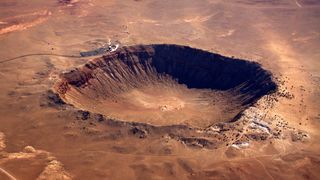
An even bigger asteroid — likely twice as large as the dinosaur-killer — left the 99-mile-wide (159 km) Vredefort crater in what is now South Africa. Because that impactor struck the planet 2 billion years ago, however, most of the crater and the evidence of its destructive force have eroded. Despite representing potentially the single largest energy-release event in Earth's history, the asteroid impact left behind no signs of the forest fires and mass extinctions that accompanied the dino-killing asteroid. That's because at the time, all life on Earth was single-celled.
How would a planetary defense system protect Earth from a collision?
The current strength of Earth's planetary defense system is its ability to provide forewarning. The hope is that efforts to observe and predict NEOs would allow months, years or even decades of planning and response to a planetary threat. In terms of concrete protection, though, it's all hypothetical.
Related: Just how many threatening asteroids are there? It's complicated.
Groups of scientists and engineers have proposed various possible responses to prevent dangerous collisions with Earth. The responses mainly involve three types of intervention, all of which are designed to knock a target off course: slamming a spacecraft into the target, pulling it using gravity, and vaporizing some (or all) of the asteroid using nuclear explosions.
In the first type of intervention, scientists and engineers could send spacecraft to act as stumbling blocks to delay or deflect a potentially hazardous object. Because both Earth and the PHO are constantly moving through space, changing the rate of an asteroid or other body's movement could cause it to miss their predicted rendezvous. This is also known as the "kinetic impactor" strategy, Space.com previously reported.
In 2022, NASA's DART mission tested a kinetic impactor by slamming a spacecraft into a small asteroid and monitoring the disruption in its movements. According to SpaceNews.com, China has also announced a kinetic impactor mission, which is slated to launch in 2026.
Another hypothetical way to prevent a collision is a "gravity tractor," a spacecraft that could alter a PHO's course using the weak force of gravity. NASA intended to test a gravity tractor by using the mass of a spacecraft to attract an asteroid, relocating some of its material into orbit around the moon. The Asteroid Redirect Mission was meant to test gravity tractors, provide samples of asteroid composition and support NASA's eventual crewed missions to Mars, according to NASA. But the mission was canceled in 2017, NASA wrote in an update, and gravity tractors remain untested as of 2023.
The final major proposal for PHO deflection is a nuclear option: to send a nuclear bomb (or several) to detonate well above the target's surface, vaporizing some of the material and causing the rest of the mass to recoil. However, according to Lindley Johnson, NASA's planetary defense officer, movies like "Armageddon," where nuclear devices are planted on an asteroid's surface, are "completely bogus," Space.com reported in 2019.
What does DART have to do with planetary defense?
NASA's DART mission was the first spacecraft to demonstrate any type of physical redirection of an asteroid. The purpose of the mission was to crash a spacecraft into the smaller of two asteroids that travel together through space. Observations of the collision and its aftermath would allow scientists to check the accuracy of their predictions and models about asteroid deflection.
The larger asteroid, Didymos, measures roughly 2,560 feet (780 m) across, while the smaller asteroid, Dimorphos (formerly Didymoon), is about 525 feet (160 m). As the asteroid pair orbits the sun, Dimorphos also orbits Didymos, circling it every 11 hours, 55 minutes. For decades, Earth-based telescopes such as the Arecibo Observatory and the Lowell Discovery Telescope have been able to track that movement "just like clockwork," Nancy Chabot, a planetary scientist at the Johns Hopkins Applied Physics Laboratory, said during a news conference held before DART's launch.
Dimorphos' precisely modeled orbit made the small asteroid a perfect target for DART. Not only did researchers know the pair of asteroids posed no threat to Earth (even if knocked off their current trajectory), but the scientists would also be able to determine exactly how the collision affected the asteroids' movements. Any push off their long-predicted course would have to result from DART's impact.
The exact amount of change in Dimorphos' trajectory would depend on the location of the impact, the surface and internal composition of the asteroid, and the debris shook loose and ejected after the hit.
DART mission scientists found that the strike was over three times more effective than a simple transfer of momentum from the spacecraft to the asteroid would have been — likely because of at least 2.2 million pounds (1 million kilograms) of debris that flew off of Dimorphos, creating a spectacular tail and changing the smaller asteroid's course forever.
Additional resources
Read through a "tabletop" simulation of U.S. agencies' readiness to respond to threatening asteroid encounters at the CNEOS site. To see how scientists might work to deflect an asteroid, watch this video from The Planetary Society. If you'd like to take a deeper dive into planetary defense, check out the book "A History of Near-Earth Objects Research" (self-published, 2022).
Bibliography
Jones, A. (2022, July 12). China to target near-Earth object 2020 PN1 for asteroid deflection mission. SpaceNews. https://spacenews.com/china-to-target-near-earth-object-2020-pn1-for-asteroid-deflection-mission/
Loff, S. (2014, April 22). NASA's search for asteroids to help protect Earth and understand our history. NASA. http://www.nasa.gov/content/nasas-search-for-asteroids-to-help-protect-earth-and-understand-our-history
Mahoney, E. (2016, July 13). Asteroid redirect mission completes robotic design milestone. NASA. http://www.nasa.gov/feature/nasas-asteroid-redirect-mission-completes-robotic-design-milestone
Planetary defense coordination office. (n.d.). NASA. Retrieved January 25, 2023, from https://www.nasa.gov/specials/pdco/index.html
Sentry: Earth impact monitoring. (n.d.). Retrieved January 25, 2023, from https://cneos.jpl.nasa.gov/sentry/
Stolte, D. (2021, June 11). University of Arizona to lead mission to discover potentially dangerous asteroids | neo surveyor | near-earth object surveyor mission. University of Arizona. https://neos.arizona.edu/news/uarizona-lead-mission-discover-potentially-dangerous-asteroids
Wilson, J. (2015, April 16). What is NASA's asteroid redirect mission? NASA. http://www.nasa.gov/content/what-is-nasa-s-asteroid-redirect-mission
Join our Space Forums to keep talking space on the latest missions, night sky and more! And if you have a news tip, correction or comment, let us know at: community@space.com.
Get the Space.com Newsletter
Breaking space news, the latest updates on rocket launches, skywatching events and more!

Vicky Stein is a science writer based in California. She has a bachelor's degree in ecology and evolutionary biology from Dartmouth College and a graduate certificate in science writing from the University of California, Santa Cruz (2018). Afterwards, she worked as a news assistant for PBS NewsHour, and now works as a freelancer covering anything from asteroids to zebras. Follow her most recent work (and most recent pictures of nudibranchs) on Twitter.


